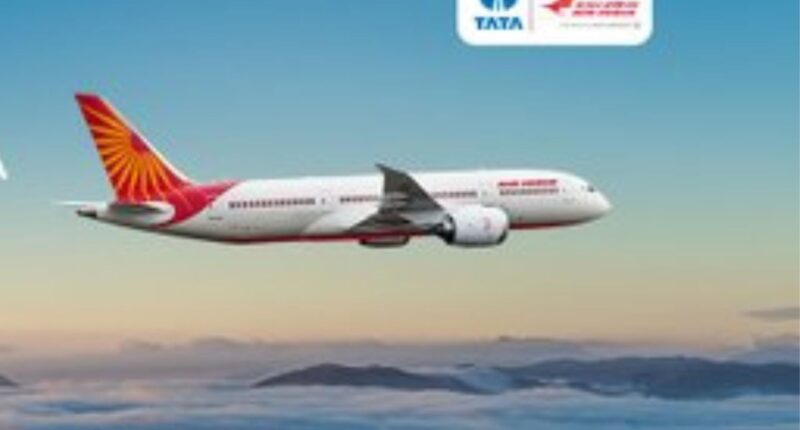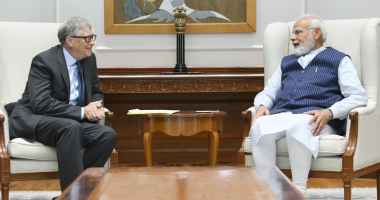
Opinions expressed by Entrepreneur contributors are their own.
You’re reading Entrepreneur India, an international franchise of Entrepreneur Media.
It’s been over a year since the Tata group announced the completion of the transaction for the purchase of Air India from the government of India. From mega orders to purchase 470 aircraft from Boeing and Airbus to recruitment of cabin crew, pilots or the integration plans for expanding its network, the airline is on a spree.
Under the new structure, salaries will be hiked for more than 2,700 pilots across Air India and AIX Connect (including Air Asia India and Air India Express) as well as for more than 5,600 of Air India’s cabin crew, reported PTI.
Earlier this year, Air India announced a mega order to purchase 470 aircraft from Boeing and Airbus. Subsequently, it planned to hire over 4,200 cabin crew trainees and 900 pilots in 2023. The cabin crew, who will be recruited from around the country, will undergo a 15-week program imparting safety and service skills.
First Phase Of Transformation Under Vihaan.AI
In the first week of April, the airline completed its first phase of transformation under Vihaan.AI, a comprehensive five-year transformation plan. The first phase called Taxi, was focussed on addressing legacy issues of the airline at scale and laying the foundation for future growth. “During this Taxi phase, we have also come a long way in establishing foundations for growth. Our record setting aircraft order, the commitment of $400 million to completely refurbish existing aircraft, the investment of $200 million in new IT, and the recruitment of literally thousands of staff are but a few of the significant investments being made to restore Air India to the upper echelons of global aviation,” said Campbell Wilson, CEO & MD, Air India.
In this phase, the airline expedited fleet expansion with 36 leased aircraft, including 11 widebodies, being delivered in 2022-23. It restored to service, or decommissioned pending sale, all long grounded aircraft, added six new international routes while increasing the frequency on another 24 routes.
It invested $200 million in upgrading IT systems including implementing Salesforce for CRM integration and upgradation of SAP ERP system from obsolete mainframe to the Cloud, upgradation of the website, employee self-service systems, learning management systems and safety management system.
Integration & Nixing Of Airlines
In the last week of March, the Air India Group announced it has completed a significant milestone in the integration of its two low-cost subsidiary airlines, Air India Express and AirAsia India.
This system merger comes five months after AirAsia India was fully acquired and subsidiaries under Air India, and three months after both AirAsia India and Air India Express were placed under a single CEO. In the coming months, the airlines will continue integrating other internal systems and eventually, their air operating permits and regulatory posts.
The integration of Air India Express and Air India will bring revenue, cost, operational benefits through broader adoption of each airlines’ best practices, systems and confer greater economies of scale. The new Air India Express will focus on leisure-oriented and price sensitive markets while improving connectivity between key domestic cities and Air India’s fast expanding international network.
AirAsia India flies to 19 destinations across the country while Air India Express operates to 14 international destinations from 19 Indian cities.
In a virtual press meet in February, Campbell Wilson, said that the Vistara brand will cease to exist after the merger with Tata SIA Airlines Ltd. The resultant full service carrier of Tata group will be known as Air India, which has a wider recognition globally considering its 90 year-long history. “Vistara is well-known mostly in the Indian market. However, the brand will preserve the Vistara legacy in the new venture,” Wilson added.
International & Domestic Expansions
In the last few months, Air India has added frequency on popular eastbound routes in its 2023 summer schedule, bringing more options for travelers. It announced a total of eight new weekly flights: six to Bangkok (three each from Delhi and Mumbai), as well as additional weekly flights from Delhi to Seoul (Incheon) and Hong Kong. With these additions, Air India and Air India Express will collectively offer 67 weekly services to Bangkok, Hong Kong, Seoul, Singapore and Tokyo from Delhi, Mumbai, Chennai, Trichy and Madurai.
In February, as part of boosting its connectivity in Europe, the airline launched a four-times-a-week non-stop operation from Delhi to Milan. The commencement of this flight along with Air India’s operations from Delhi to Vienna and to Copenhagen will strengthen the airline’s footprint significantly in Europe. With the resumption of these flights, Air India will be serving seven cities in Europe with 79 weekly nonstop flights – 48 to the United Kingdom and 31 to Continental Europe. This expansion comes as the airline continues to make progress in augmenting its fleet with leased aircraft, and the return of existing aircraft to active service.
As part of its domestic network enhancement, three airports – Bhubaneswar (BBI), Bagdogra (IXB) and Surat (STV) – will now be served by Air Asia India.
Additionally, Air India will enhance connections from Delhi and/or Mumbai to Cochin (COK), Trivandrum (TRV), Visakhapatnam (VTZ) and Nagpur (NAG) to enable seamless, two-way domestic-international-connectivity with long-haul international flights operating from the two metros.
Since its first flight on October 15, 1932, Air India has an extensive domestic network and has spread its wings beyond to become a major international airline with a network across USA, Canada, UK, Europe, Far-East, South-East Asia, Australia and the Gulf.
After Tata group took over Air India, the year was a smooth ride for the airline until incidents of unruly passengers came to light. Nevertheless, under the aegis of the conglomerate, the airline is moving forward with its transformation plan.
This article is from Entrepreneur.com









